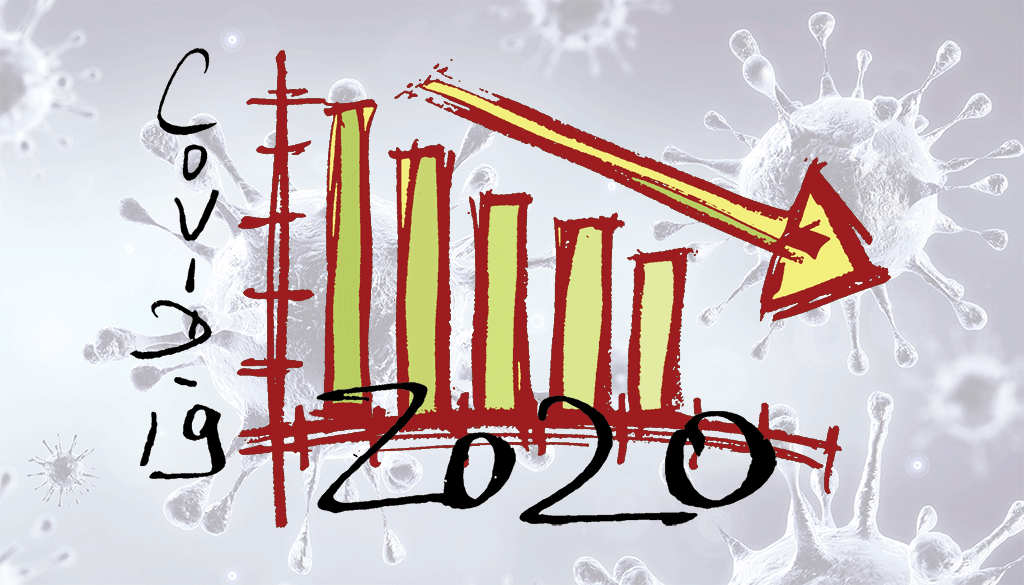
On the last day of February in this leap year, the Indian Finance Minister Mr. Arun Jaitley unveiled the budget of the Government of India for the year 2016/17. The total size of the budget is a whopping 19.80 trillion Indian rupees. If one were to believe most of the analysts and observers in India, the budget was ‘more of the same’ rather than a total ‘break with the past’. The Indian budget was being keenly watched, not only in India but also in the outside world, as India seems to be one of the few bright spots in the international economy which is grappling with ‘European turmoil’ and the ‘Chinese slowdown’.
For us Nepalese, the Indian budget is of much concern as the decisions made in New Delhi affect many aspects of our life and economy. We are a smaller neighbour of India, as much as two-thirds of our external economic ties is with India. More than that, our rupee is tied with their rupee, and in our world view India seems to take a larger than life position. Our political system seems to follow theirs and our leaders take ideas and inspiration (or sometimes maybe even instructions as is often alleged) from India. We seem to see the Indian ‘hand’ in whatever transpires in Nepal. But if one were to go through the media reports, there was little mention of the aftereffects of the Indian Budget in the Nepali discourse.
This is perhaps because budgets have lost the sheen, one could see in the past. The duty rates, be it customs or excise, have come down; imports are readily allowed, and with the economies more exposed to the outside world, the finance ministers’ authority to exercise control on the availability and price of everything has tumbled. Even in direct taxes, the rates and slabs have become much more predictable.
In the last century, the Indian budget used to decide the price and availability of the consumer goods from the next day. As a lot of consumer goods imported from India are sourced from the market of the bordering towns of India, Indian taxes and duties are included in the price. So we end up paying not only out taxes, but Indian taxes too. Fortunately, this year the freight rates were not raised in the railway budget which saved us from the sudden hike in transportation cost of the imported goods. The Indian excise also has been kept more or less unchanged. The major goods which have become costlier in India due to the budget are tobacco and automobiles. This will not affect the Nepali market, as we do not import tobacco from India in any substantial quantity. Cars and SUVs are imported from India free of most of their internal taxes. The only change that could have some direct impact on consumers in Nepal is the change (increase) in Service Tax, since in the case of services consumed by Nepali parties, India does not treat them (unless paid in hard currency) as export of services, we end up paying the service taxes whenever we utilize the services of Indian companies.
The budget exercise is basically a balancing act of the government to match its planned expenses with the expected income, although governments have the unique authority of raising taxes and minting money to meet shortfalls. Before economic reforms, businesses used to be interested on ‘from where and how the government will raise money’ (taxes and duties), now the interest has shifted to how the government is going to spend money (expenditure side). The major Indian business groups and associations (chambers) ‘welcomed’ the ‘pro rural’ and ‘pro poor’ budget in spite of the fact that the government did not announce lowering of corporate tax (was expected as the Indian Finance Minister had assured to lower the corporate tax rate in the last year’s budget speech. The noisy urban middle class of India did not find much in the budget as personal Income tax rates and exemptions with minor exceptions remained at the same level. The focus seems to be changing from rates to creation of enabling environment.
In spite of the pressure to stimulate the market through deficit financing (India practiced that in the aftermath of financial crisis of 2007/08 and the fiscal deficit in India zoomed to over six percent, way above its declared target of keeping it below three percent) by postponing the fiscal deficit target as was done in the past budget, the Indian finance minister has stuck to the target of 3.9 percent of the GDP this year and 3.5 percent in the next fiscal. The lower fiscal deficit will not only curb the growth of money supply and control inflation, but will also allow the Central Bank to reduce interest rate; thus, spurring investment from the private sector. Our policy makers who have been gunning for increasing the deficit for meeting the needs of reconstruction should take a cue from it. Increased deficit either leads to increased inflation (minting more money), or shifting the burden of living beyond the means to our children (increasing debt).
This year’s Indian budget has emphasised on reviving the rural economy. The emphasis is in developing agricultural infrastructure. With consecutive years of drought, the farmers were in distress. It is more of a political statement to show that the government is pro-poor and pro-farmers. This measure is expected to spur rural demand and will be good news to companies who specially cater to the rural economy.
This year’s Indian budget includes a number of initiatives targeting the poor including availing LPG gas to all the families below poverty line within five years, increased allocation to contributory pension schemes, health insurance schemes, etc. There is emphasis on making direct transfer of subsidies to the needy using modern instruments like bank accounts (India made a big leap in availing bank accounts to poor families through Pradhan Mantri Jan Dhan Yojana last year) and use of modern biometric ID-cards (a new law to make ADHAR compulsory for receiving government subsidies is being enacted). These initiatives allow the government to extend support to targeted groups and reduce the misuse of government support/subsidy. The government of India seems to be learning a lesson that direct support through money transfer to needy families is much better than the indirect market distorting price fixing subsidies, which are usurped by the richer segment of the population. Will our leaders also heed to such trend?
The other big initiative of the government seems to be on infrastructure. Both general budget and Railway budget have allocated huge sums of money to infrastructure like roads, rural roads, ports, electrification of all villages in two years, etc. If one is to go by the reports in the Indian media, the Indian Prime Minister is taking personal interest in the execution of infrastructure projects. The contract allocation has become much swifter. Infrastructure not only changes the face of the country but also creates opportunities for the private sector to grow. Will our government put similar emphasis on infrastructure and ensure reforms that will ensure execution of the projects in time?
The Indian budget has announced a number of policy reforms to be undertaken in the near future. These include allowing foreign portfolio investment of up to 49 percent in state owned companies except banks, allowing 100 percent foreign ownership in food marketing companies, amendment of the Company Act to improve the ease of doing business, new bankruptcy code for financial firms, etc. As a smaller economy which is intricately connected with the Indian economy we need to have more liberal terms for investment rules and procedures if we are to successfully compete in the international market for investment.
The one thing which was promptly reported in our media is that the budget for Ministry of External Affairs of India has taken heat with the likelihood of decline in Indian assistance to Nepal. The detailed item-wise allocation of the Ministry is not available to us, but the overall distribution shows that the budget for grants to foreign governments has not declined. In the Indian media, there are also reports that the budget of assistance to neighboring countries has actually been increased. It may be premature to speculate whether the Indian involvement in Nepal in terms of extending development assistance will decline or not.
In sum, the Indian budget seems to be a case of continued incremental reforms rather than a ‘big ticket’ reform exercise. The increased allocation to programs brought out by the previous government indicates that in spite of the big ideological divide between this government and its predecessor, one sees in the media, there are no U-turns. By and large India is marching in the higher trajectory of growth. Will we be able to take some benefits of out of its growth or we will remain obsessed with ‘India’s grave designs’ for its neighbours?
 Dr Hemant Dabadi is a Senior Fellow at Samriddhi, The Prosperity Foundation, is a well-known expert writing and researching on economic aspects of federalism in Nepal.
Dr Hemant Dabadi is a Senior Fellow at Samriddhi, The Prosperity Foundation, is a well-known expert writing and researching on economic aspects of federalism in Nepal.
 Dr Hemant Dabadi is a Senior Fellow at Samriddhi, The Prosperity Foundation, is a well-known expert writing and researching on economic aspects of federalism in Nepal.
Dr Hemant Dabadi is a Senior Fellow at Samriddhi, The Prosperity Foundation, is a well-known expert writing and researching on economic aspects of federalism in Nepal.
Published Date: March 31, 2016, 12:00 am
Post Comment
E-Magazine
RELATED 360 Scrutiny




